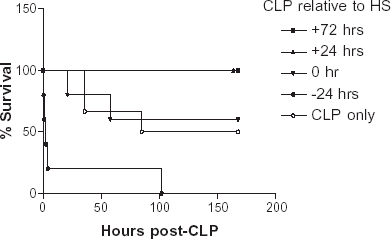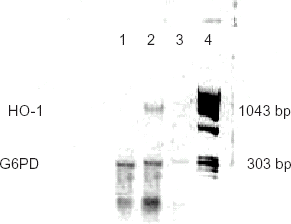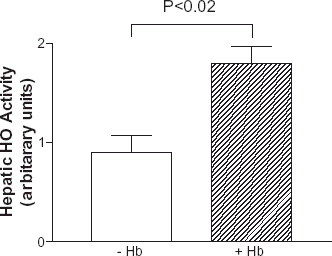Figures & data
Figure 1. Seven day survival curves of animals resuscitated with HS and subjected to a CLP at various time points (24 h before, 0, 24, and 72 h after HS resuscitation). Animals resuscitated with HS prior to sepsis induction had a significantly higher survival rate than other groups (P < 0.002, Log rank test, N = 5–6 each).

Figure 2. Hepatic HO-1 gene expressions (RT-PCR) of animals 24 h after HS resuscitation prior to sepsis induction. Lane 1: A RT-PCR product from a non-HS resuscitated animal. A 303 base-pair band represents a control gene (glyceraldehyde-6-phosphate dehydrogenase; G6PDH) expression. Lane 2: A RT-PCR product prepared from a HS resuscitated animal. A 1043 base-pair band indicates HO-1 gene expression. Lane 3: A negative control (RT-PCR done without the MuLV reverse transcriptase). Absence of bands indicates no genomic DNA contamination. Lane 4: DNA weight marker (ΦX174RF/HaeIII fragments).

